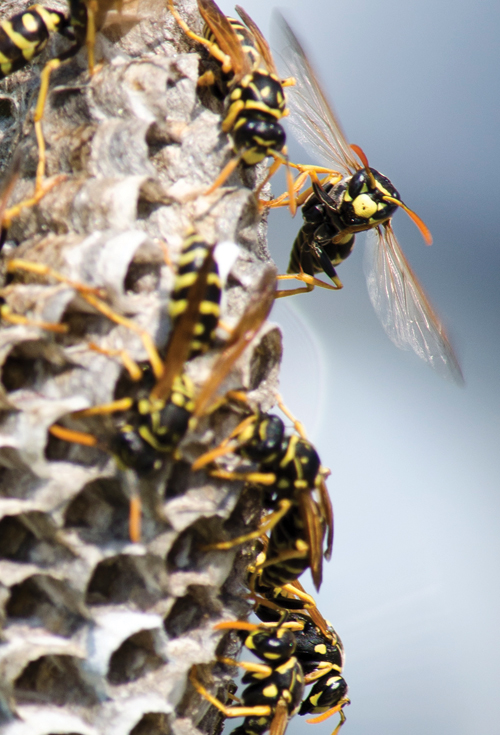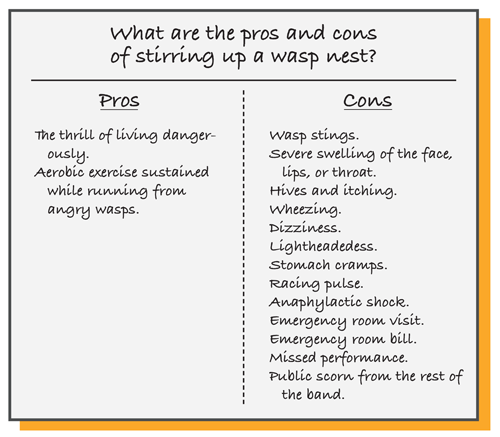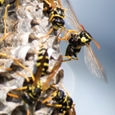
Several years ago I had a student (who for the purposes of this column I’ll call Bubba) who made an extremely poor decision at least one time per school year. I recognized that he lacked good judgment his freshman year when he accepted a challenge from an upperclassman to lick a toilet seat. He did it for no other reason than to please and impress others. (Other than the trombone section, I’m not sure he made much of an impression.) After being informed of the incident, I had a talk with him about the health dangers of licking toilet seats, as well as the creation of a mental image that I would have a difficult time ever erasing.
During his sophomore year, Bubba was trying out for all-region, and I saw him walking down the hallway of the host school. The first thing I noticed was that he left a three-foot trail of what appeared to be blood on the white, tile floor. Then I glanced up at his hands that were cradling his face, blood dripping profusely through his fingers. Alarmed, I stopped him and asked, “Bubba, what happened?” He looked at me and then slowly began removing not one, not two, but six gum balls of various shades of red from his mouth. What had appeared to be a blood was simply red gumball dye and saliva. Relieved that Bubba was not bleeding to death, I located a mop and made him clean the floor.
On the morning of a marching contest Bubba’s junior year, he came into my office as I was completing some last minute tasks. I looked up and was astonished to find that his upper lip was swollen to three times its normal size. What he said came out something like “Iwasbuhoutbuhfrontdoorbuhof bandbuhroombuhandstuckbuhstick upinbubwaspbuhnestbuhandthey stungbuhmeonthelipbuh.” He was my fourth chair trumpet player, so this was quite a blow. Fortunately, he was not allergic to wasp stings and did not go into anaphylactic shock. Miraculously, the swelling went down enough for him to play several hours later.
Of course, it doesn’t take extreme examples such as these to prove that high school students have problems with decision-making. However, if we share a very simple technique with them, it could make all the difference. In fact, I use this technique myself to help solve dilemmas of all types:
Take a piece of paper, draw a line down the middle, and then write the pros and cons of a certain decision on each side of the line. Pencil and paper will not always be available, but once this becomes a habit, the idea of considering good and bad consequences will likely carry over into decisions that have to be made on the spot. However, if possible, writing things down in a thoughtful manner is always best.
After making the list, either written or mental, compare the sides. The number of entries on each side is a factor, and if one side greatly outnumbers the other, it is likely the way to go. But this is not a hard and fast rule; sometimes one factor on one side can be more important than several on the other. The important thing is to gain clarity, and have a decision that was made after full and rational thought.
If Bubba had used this technique the consequences of his misdeeds may have been avoided. As shown below, in evaluating the two sides, it’s fairly clear that it would be best to leave the wasp nest alone.

Of course, this method can be used for more serious matters. (Not that one’s personal health and safety are not important). My son Kelsey wasn’t sure whether he wanted to play football his sophomore year of high school or limit himself to band and basketball. Although I would have liked for him to concentrate more on his music, I realized it was his decision. However, I wanted him to consider both sides of the matter, so I asked him to use the method I’ve described above. Without going into precise details, I will say that after careful consideration he decided to play football. It ended up being the right decision; he became a two-time all-state running back and trumpet player.
While this may seem to be a rather simplistic way to make decisions, it is extremely effective even when making major decisions like choosing a college to attend, deciding what major to pursue, accepting a new job position, or making a major purchase. Considering both sides carefully can be the difference between a good decision and one filled with regrets.
Postscript: As for Bubba, there were no incidents his senior year. Four years later, he was the first in his family to graduate from college. He then married another former band member of mine, and now has a child. I’m assuming he’ll coach his young son about the dangers of licking toilet seats, overstocking his mouth with jawbreakers, and disrupting wasp nests.






